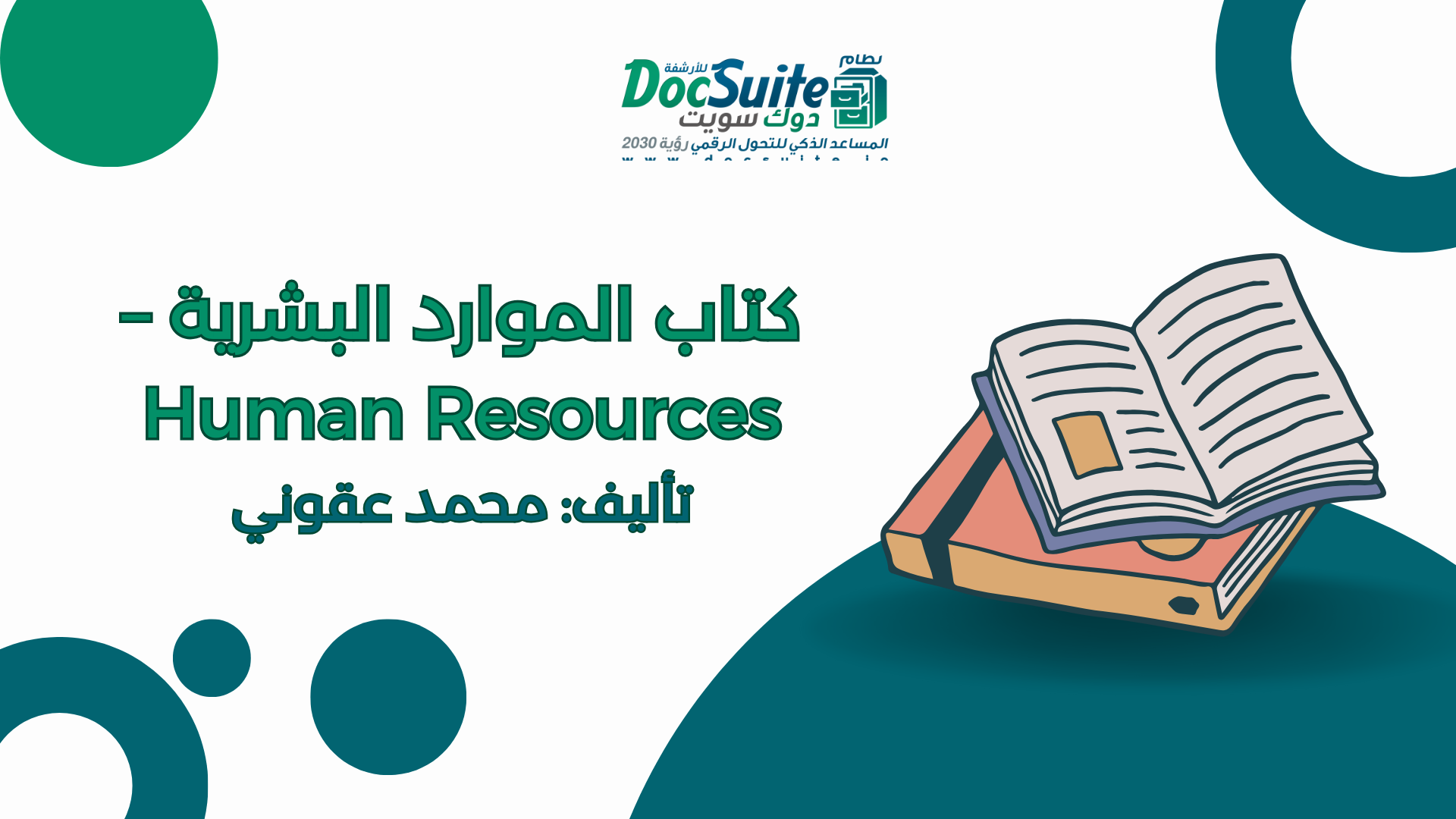Author: Mohammed Aqouni
Summary of the Book: Human Resources
The book "Human Resources" highlights that human resources represent one of the most critical assets an organization possesses. Achieving the organization's goals is impossible without these resources. Without individuals, an organization is merely a collection of fixed assets that cannot produce anything without the support of the workforce. Generally, most researchers agree that managers perform five primary functions: planning, organizing, staffing, leading, and controlling.
The book further explains that human resources refer to the individuals working within organizations and institutions. Human resource management involves managing these individuals through specific methods and strategies aimed at enhancing employee performance, resolving work-related issues, and achieving the organization's goals. This responsibility lies with human resource consultants and executive managers within the organization.
The book covers essential definitions of human resource management, including:
French:
The process of selecting, using, developing, and compensating human resources within the organization.
Sikula:
The use of the workforce in an establishment, including recruitment, performance evaluation, development, compensation, and the provision of social and health services for employees and personnel research.
Glueck:
A function within the organization responsible for supplying the necessary human resources, including workforce planning, recruitment, employment, and dismissal.
Schroeder and Sherman:
Human resource management involves essential processes and rules to be followed. Its primary task is to assist managers by providing the advice and insights needed for effective employee management.
Smith and Grant:
It is the responsibility of all managers within the establishment and aligns with the functions performed by human resource specialists in personnel management.
From these definitions, the book concludes that human resource management is one of the vital functions in modern establishments, focusing on efficiently utilizing human resources across various types of organizations.
Managers' perspectives on human resource management vary, leading to two primary viewpoints:
Traditional Viewpoint:
Some managers see human resource management as a minor function limited to routine administrative tasks like maintaining employee records and monitoring attendance and leave. These managers do not regard human resource management as significantly impacting the success and efficiency of organizations.
Modern Viewpoint:
Other managers consider human resource management a crucial administrative function, equally important as marketing, production, and finance due to the critical role of human resources in enhancing organizational productivity. This perspective includes key activities such as job description, human resource planning, attracting and recruiting suitable personnel, training and developing human resources, and traditional personnel management activities within organizations.
The Relationship Between the "Doc Suite HR" System and the Book
The "DocSuite HR" system is an informational tool used in human resource management, facilitating the management of employee-related information such as personal data, salaries, leaves, performance, and more. On the other hand, the book "Human Resources" serves as a reference for understanding and applying general human resource management concepts, covering topics like recruitment, training, performance evaluation, and company policies. The relationship between the two lies in the fact that the "Doc Suite HR" system relies on the concepts and principles discussed in human resource management literature to design and implement its functions and operations.
The Role of the "Doc Suite HR" System in Human Resource Management
The "Doc Suite HR" system plays a crucial role in managing human resources through several functions:
Unified Database:
The system stores employee information, including personal data, employment history, salaries, attendance, and more, in one place.
Skills and Knowledge Management:
It helps track each employee's skills and knowledge, making it easier to identify capabilities and direct training based on needs.
Performance Management:
The system can be used to evaluate employee performance, set goals, and track performance progress over time.
Employee Relations Management:
It facilitates communication between HR management and employees through messaging, answering inquiries, and providing support.
Document and File Management:
The system allows for the storage and management of employee-related documents, such as contracts, certificates, and personal reports.
Recruitment and Selection Processes:
The system can be used to announce job openings, receive applications, and track recruitment processes until completion.
Overall, the "Doc Suite HR" system aims to streamline and organize all processes related to human resource management to achieve optimal performance and productivity for the organization.
You can download the book "Human Resources" directly from here.
